Welcome to the 3rd edition of "From My Kitchen, Whispers and Titbits"! If you’ve followed the last two editions, you’ll know I’m trying to keep to a format of a recipe, some whispers, some titbits….and possibly a Tangent! This week’s tangent is a trip to CERN, and the technologist comes out in me!
A young physicist in the wings, a school trip cancelled by COVID, a tale of disappointment that I'm sure many folks can relate to. The weekend past, I had a chance to put it right. A long overdue father-son trip to CERN in which I can't decide who took whom! My 21-year-old, who arranged the backstage tour with a Glasgow University Professor, or the bank of dad, who provided the funding. Either way, I was delighted to be there.
I knew that CERN was the home to the Large Hadron Collider, a tunnel built some 100m underground and with a circumference of 27km, which is a pretty big deal. Armed with a 35-year-old GCSE in physics and a love of science fiction, I couldn't wait to visit.
I just thought we’d be heading into the usual kind of science visitor centre that I’ve been to over the years. Instead, a newly opened gateway to science provides three exhibition areas: Discover CERN, Our Universe and the Quantum World. Alongside a show that I thought would be a cinematic feature. Instead, more like the Royal Institution Christmas lectures that we have here in the UK. A presenter leads us through the process of splitting atoms, cooling titanium to become a superconductor using liquid nitrogen. A miniature train that not only levitated, but levitated upside down. OK, on some level still fairly science museum territory, however, a great centre for learning.
Then we met the professor at 4 pm, who gave us CERN lanyards (I'd made it!) and our visitor passes. We then crossed the road in the baking heat to the other side of the complex. Through the security gates where my education continued, and from this point, more from a professional point of view. Whilst my son grasped the physics, I would ask questions about operations, data, planning and projects.
My takeaways and reflection from a data strategy perspective - food for thought:
Data is at an unimaginable scale, the ultimate real-time data governance challenge:
My understanding is that bunches of protons are accelerated through CERN's complex of accelerators, gaining energy at each stage until they reach the LHC itself. In the LHC, particles collide approximately 1 billion times per second, generating about one petabyte of collision data per second.
For every 30 million collision events, only around 1,200 are deemed worth saving. The other 29,998,800 collision events are discarded forever in real-time!
These split-second algorithmic decisions on which data to keep cannot be reversed. The selected events are stored in Tier 0 systems at CERN before being distributed to Tier 1 sites globally for analysis and long-term storage.
Thinking about storage costs, this is like being asked to store roughly 200,000 DVDs per second - and although I'm horrified about throwing data away, I can understand why!
The wind beneath the wings, data behind the data and the control room
The bunches of protons are known as the beam. The beam and the site are monitored 24/7, 365 days a year. Control room operators make sure the accelerator is running as efficiently as possible. They monitor things like beam density, speed, and position. Adjust focusing and alignment magnets, as well as making sure the vacuum systems aren't leaking and importantly, the radiation valves are securely closed. An oversimplification on my part. What struck me was the way in which the information, along with the plan for the day, is projected onto the wall of the control room. Green is good!
The luxury of planned obsolescence
They are due to shut down the collider for three years, part of a regular cycle of renewal and maintenance. Necessary upgrades where in some part the latest technology will have already missed its opportunity to be included. Decisions were made months ago due to funding or the technology available at the time of the process. New chips, detector components already in build, ready for day one of the shutdown. The mind boggles at the planning involved and the collaboration between nations.
As someone who's spent 25+ years managing data projects, running weekend implementations around backup cycles and Monday morning service heartbeats, I was envious. When did you last have three years to rebuild your core systems properly?
Recently, as a technology platform owner, I lived in the "keep the lights on" space. Implementing changes in tiny weekend windows, always conscious of that Monday morning business resumption. I'm sure again I'm oversimplifying CERN's world, we didn't get into the nitty gritty of general software and systems integration. I just enjoy thinking about the wisdom in a patient, methodical approach to transformation.
Every legacy system migration I've ever managed has been constrained by the tyranny of uptime and usually an understandable deadline.
The origin of the internet - could it be like stepping into Narnia
With every turn, we learned something new. The history of CERN, founded in 1954 and built on principles of collaboration between nations, unfolded before us. My favourite moment was a beautiful presentation built around the original Synchrocyclotron - CERN's first particle accelerator.
We were shown a timeline of key moments in CERN's history, then entered a darkened room with futuristic floor lighting. A video presentation came alive, augmented by the original machine used for experiments in the early days. When they finished with this colossal beast, they had to let it cool down for years. Too massive to move, they simply built offices around it, turning it into a centrepiece of history preserved in place.
Another building, another corridor. When my interest in software became evident, the professor stopped at what could be any door in this hive of fabulous minds. However, this door, this particular one, is special; behind it lies the office where Tim Berners-Lee invented the World Wide Web with his CERN colleagues, changing the world forever.
.....and as to the decision on who took whom. He's definitely taken me on a journey in more ways than one. As I stood by his side and listened to how he discussed quarks, photons and neutrons in the same sentence, I felt incredibly proud.
🍳 From My Kitchen
In terms of food, we could have gone to the Big Bang Café with meals like Falafel Quantum Field Salad and The Gourmet Orbit. Instead, we got a 10-minute bus ride up to the next little town in France, Saint-Genis-Pouilly, where we found somewhere making the most amazing poke bowls. I appreciate that poke bowls aren't very French, but we were just trying to buck the trend of the expensive Swiss franc. That and the bowls were made to order, and although they followed a fairly fast-food set recipe, they were made with fresh ingredients. A Mediterranean Hawaiian feel that was absolutely spot on. You can find them at @mahana_poke if you're ever in the area.
Flexible Couscous Salad
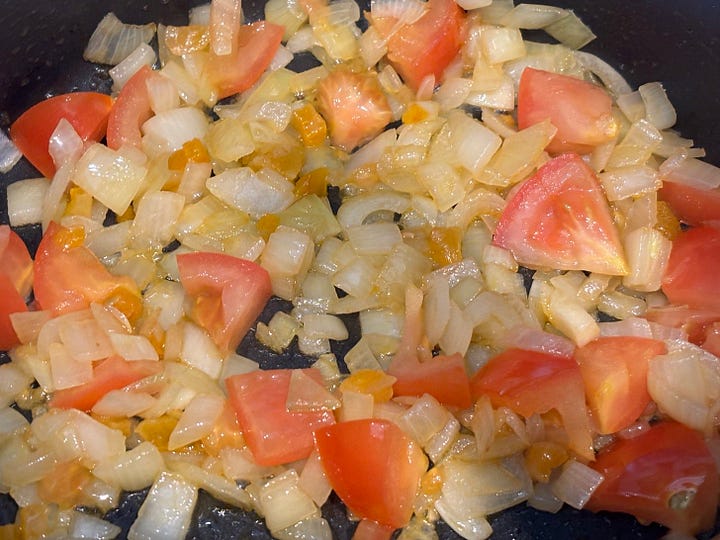
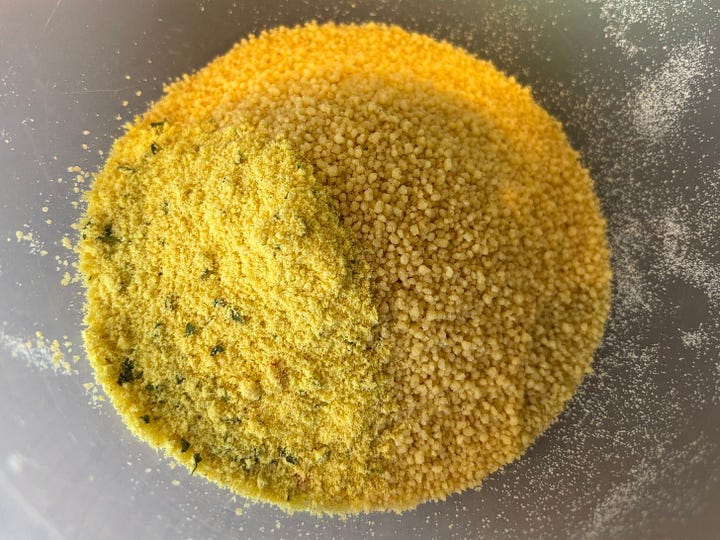
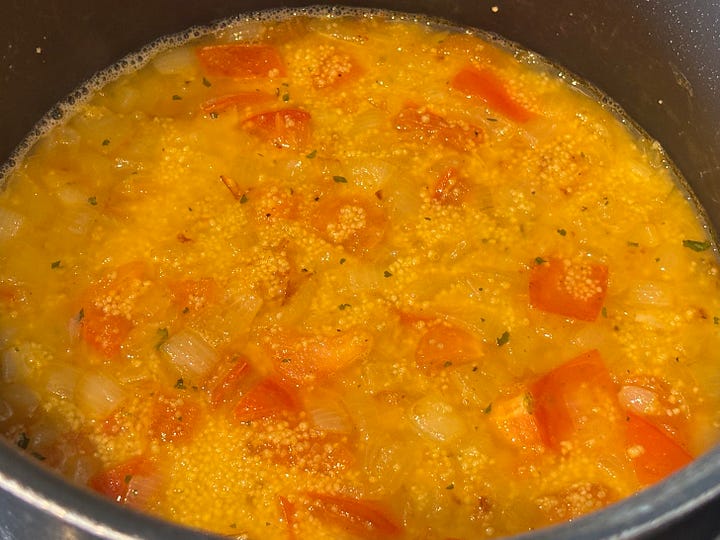
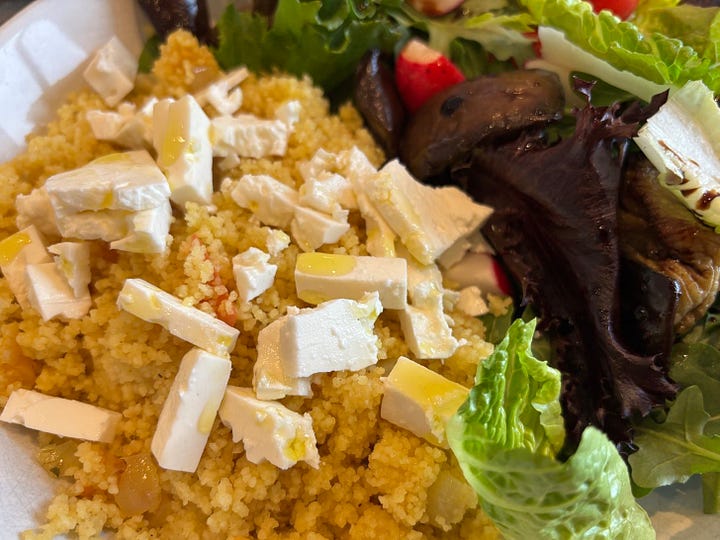
This couscous salad came about from wanting to recreate that fresh, made-to-order feeling I experienced at Mahana Poke in France. It's become my go-to template for using up bits and pieces in the fridge whilst creating something that feels intentional rather than like leftovers. The beauty lies in its adaptability - think of it as a foundation recipe that welcomes whatever seasonal vegetables or roasted remnants you have lurking about.
I've started deliberately cooking extra roasted aubergine or butternut squash from other meals, knowing they'll find their way into salads like this throughout the week. It's a simple trick that transforms meal planning from a chore into a series of connected, practical choices.
Serves: 4 as a light lunch or side dish
Preparation time: 15 minutes
Cooking time: 10 minutes
Base Ingredients
1 small onion, diced
1 pepper, diced (any colour)
2-3 dried apricots, diced
1 tomato, chopped (optional)
A little oil for softening
200g couscous
1 tsp bouillon powder (optional)
300ml boiling water
The Salad Builders
Crumbled feta cheese (or a tin of sardines/mackerel)
Extra virgin olive oil
Bistro salad bag (or mixed leaves)
A few radishes, chopped
Leftover roasted vegetables (aubergine, butternut squash, courgettes)
Balsamic vinegar for drizzling
Method
Gently soften the diced onion, pepper, and apricots in a little oil for 5-10 minutes.
Add the chopped tomato if using and cook for another minute or two.
In a large bowl, mix the couscous with bouillon powder if using. Then tip into the softened onion mixture, and then add in the boiling water.
Stir everything together, cover tightly. Leave for 5 minutes to absorb.
Fluff with a fork, a drizzle of olive oil, and allow to cool slightly.
You can fold through the crumbled feta (or flaked sardines/mackerel) and a good glug of olive oil if you are going to eat all in one sitting, or add this later.
Serve alongside your chosen salad leaves with a light drizzle of balsamic vinegar, chopped radishes, and whatever roasted vegetables you have on hand.
Notes
This is deliberately flexible - swap the apricots for dates or sultanas, try different cheese (goat's cheese works beautifully), or add toasted nuts for crunch. The sardines/mackerel option gives you a lovely protein boost and works particularly well if you want something more substantial. The couscous will keep happily in the fridge for a few days and tastes great served cold, making it perfect for packed lunches or quick midweek meals. The key is having that warm, flavoured couscous as your base, then building around what's seasonal or what needs using up. Perfect for those moments when you want something fresh and satisfying without the faff of a complicated recipe.
👨🍳 Whispers from the Grapevine, From One Kitchen to Another
Not recipes I've tried this week, but those I've made a mental note to pass on.
1. Roasted Herby Courgettes by [Melissa Norman](https://substack.com/@yesyoucaneatthis)
I shared this on notes this week and couldn't let it slip by without giving it another mention. I'm keen to try and get some Yellow courgettes in order to give this a try along with the butter bean dip.
2. Gooseberry, Almond and Spelt Cake by Diana Henry
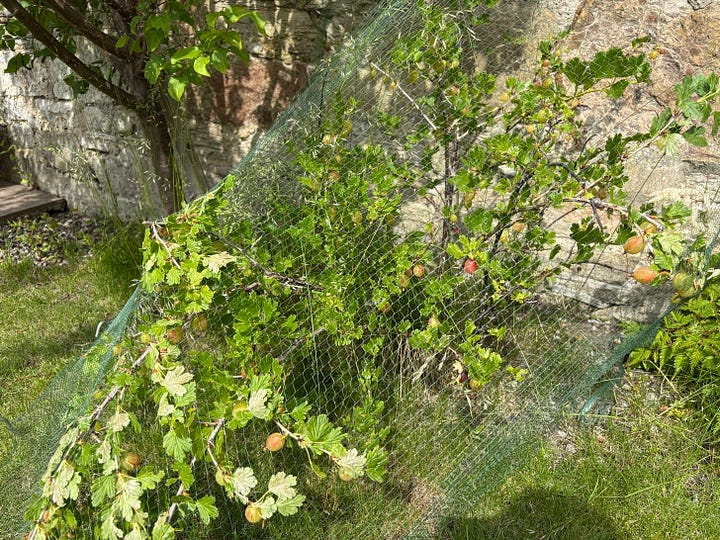
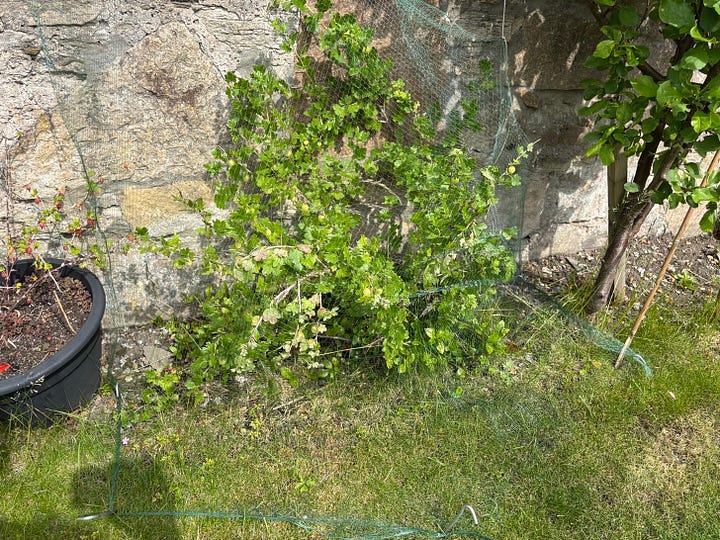
There seems to be a two-week window where you can get Gooseberries! I think that window is now judging by the two bushes in the back garden, ready to unload. I blinked this time last year, and the berries were gone! This year I've got a Heath Robinson kind of netting thing going on!! The berries are still intact, and I'm hatching a plan to use the recipe from Diana's ‘A Change of Appetite’ cookbook. The recipe is up on the Telegraph website behind a paywall. I think if you provide an email address, you can get 7 days to browse.
This is a beautiful book that just exudes a new way of thinking, a way of trying to cook differently.
✍️ Scribbled Discoveries: Titbits of Note
1. Poke - is Hawaiian in origin
It is amazing how food travels, a small French town took me to another place, a journey if you like. I thought poke, came about from poking around in the bowl…but on looking this up for research….. The word "poke" (pronounced "poh-kay") means "to slice" or "to cut" in Hawaiian. The traditional version was quite simple - just cubed raw fish (usually ahi tuna) with basic seasonings. Roots in ancient Polynesian cuisine - originally made by Hawaiian fishermen who would season cuts of fish with sea salt, seaweed, and crushed kukui nuts.
2. BBC Food Chain - AI in the Food Industry
Latest podcast for the BBC Food Chain radio 4 programme.
This episode offers a fascinating glimpse into how AI is quietly transforming the food industry from farm to fork. The main protagonists - Chef Matan Zakan, Chef Robotics CEO Rajat Bagheria, ZEST co-founder Dini McGrath, and AI industry thought leader Tamsin Deasey Weinsten - weave a narrative of augmentation rather than replacement:
Chef Matan Zakan uses it to spark creativity whilst maintaining that human sensory expertise remains irreplaceable
Rajat Bagheria emphasises collaborative robots working alongside humans to solve labour shortages
Dini McGrath reveals how AI preserves human judgement about food safety whilst optimising waste streams
Tamsin Deasey Weinsten explains how AI enables humans to focus on higher-value work whilst machines handle data-intensive tasks
Yet beneath this reassuring narrative lies an unmistakable sense that we're witnessing the early stages of something more transformative. I can't help feeling we're approaching a tipping point. The technology is rapidly evolving from simple automation to sophisticated AI that understands food manipulation and flavour science. This episode captures that fascinating tension between present augmentation and future possibility, making it essential listening for understanding where food and technology intersect.
3. Longest Day….nearly but not quite
Our longest day is approaching fast. Last week we had to put the heating on, and today, as I write this, all the windows are open. It's a hard season to navigate, and the term weather whiplash keeps bouncing around in my head. I'm minded that the strawberries are in full swing, so make sure to look up a Pick Your Own farm if you can. Or if you are the foraging kind, then the elderflowers are in full swing. I made a mental note to come back to this recipe from Mark Diacono on Elderflower Cordial from last year.
Week 3….. Thanks for reading this far, and many many thanks to those folk who’ve mentioned they like the new format, it helps with the perseverance!

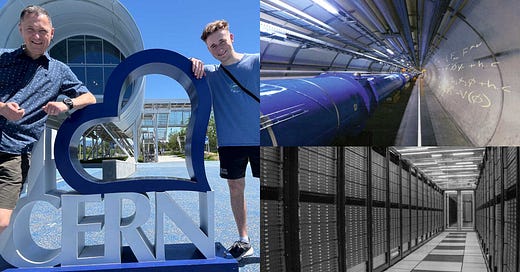




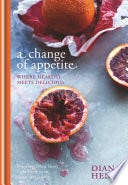

I love the fact that CERN has a Big Bang Cafe! Lol! When you come to California, you should visit JPL, the Jet Propulsion Laboratory. It's a fascinating place!
YUM alert!